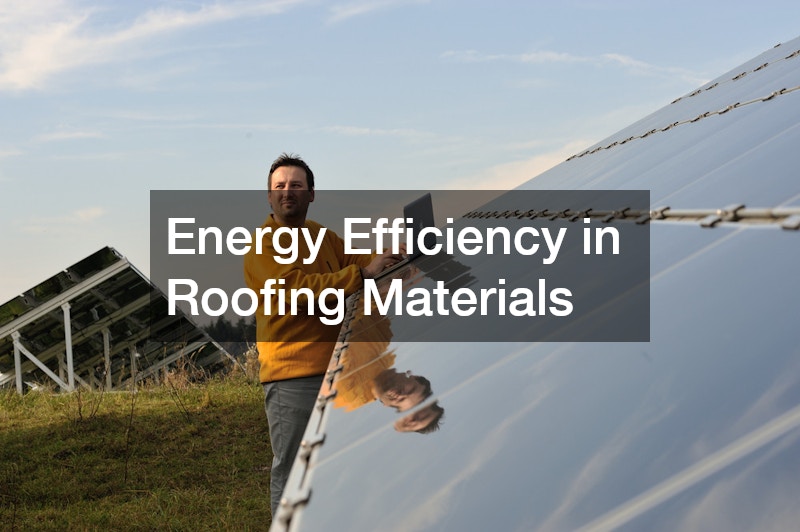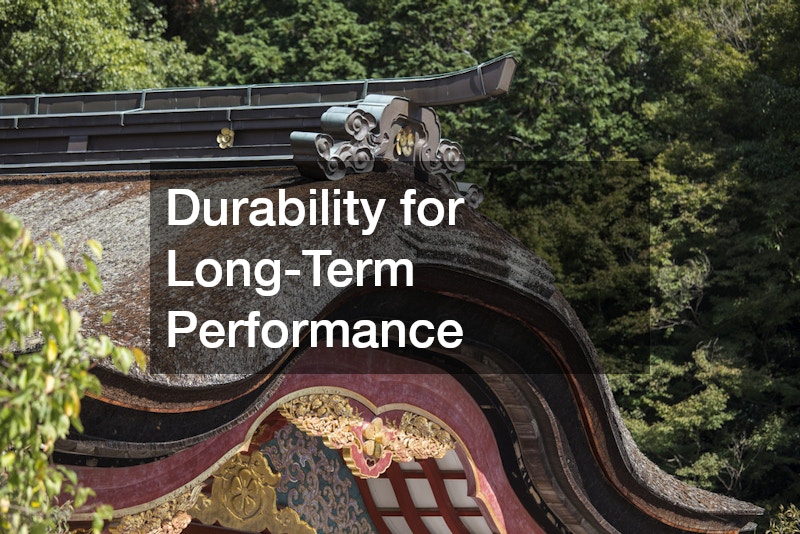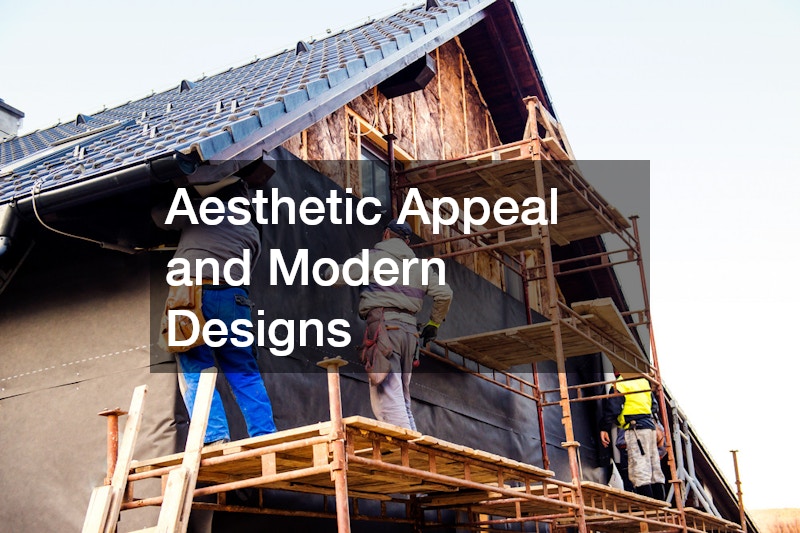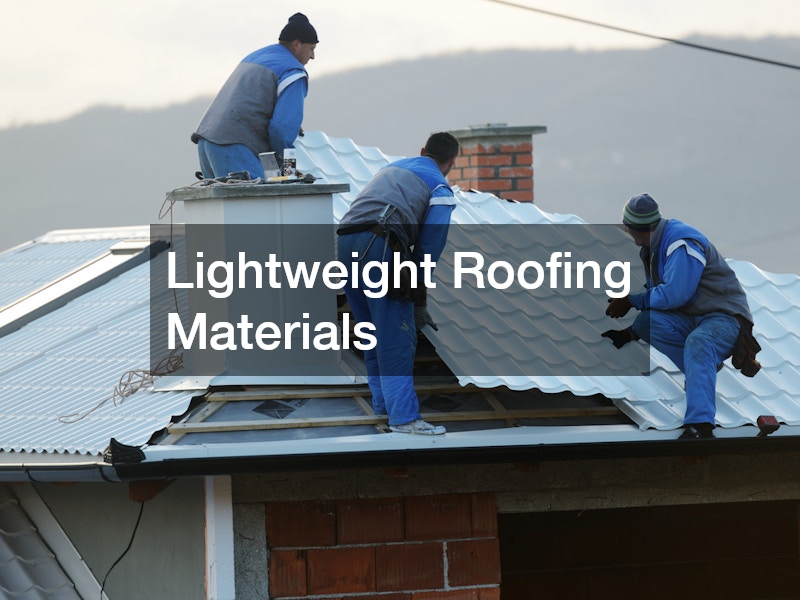
10 Essential Features of Contemporary Roofing Styles
Considering New Roof Options
In recent years, contemporary roofing styles have evolved to meet the demands of modern homeowners and builders alike. Today’s roofing systems are not just about providing shelter; they play a crucial role in enhancing energy efficiency, durability, and the overall aesthetic of a home. As sustainability becomes more of a priority, homeowners are seeking roofing solutions that can withstand environmental pressures while reducing their carbon footprint. This shift has resulted in a diverse range of innovative materials and designs that blend functionality with modern appeal. As we explore the essential features of contemporary roofing styles, it becomes clear that roofing has moved beyond mere practicality—becoming an integral part of the architectural experience.

1. Energy Efficiency in Roofing Materials
One of the most critical features of contemporary roofing styles is energy efficiency. With the increasing focus on reducing energy consumption and minimizing environmental impact, modern roofing systems are designed to regulate indoor temperatures more effectively. Materials like metal, cool roofs, and reflective coatings help reduce the heat absorbed by the home, minimizing the reliance on air conditioning and heating systems. These energy-efficient roofing materials not only lower utility bills but also contribute to a more sustainable home environment. This integration of energy-saving technology is essential for contemporary homes looking to balance comfort and environmental responsibility.
On a more specific level, energy-efficient roofing materials pair well with other energy-saving features such as impact resistant windows. Combining energy-efficient windows and roofing materials enhances the overall insulation of the home, ensuring that it remains cooler in the summer and warmer in the winter. For homeowners exploring contemporary roofing styles, prioritizing both the roof and window efficiency is a strategic way to create a more energy-conscious living space while maintaining modern design aesthetics.
2. Sustainability and Eco-Friendly Options
Sustainability is at the forefront of contemporary roofing styles, with homeowners increasingly opting for eco-friendly options that reduce their environmental footprint. Materials like recycled shingles, metal roofing, and living roofs are gaining popularity for their ability to minimize waste and promote energy conservation. These sustainable roofing choices not only last longer than traditional materials but also require less frequent replacement, reducing overall material consumption. As part of the global movement toward greener building practices, sustainable roofing is no longer a luxury but a necessity for environmentally conscious homeowners.
For example, when roof repair is required, choosing sustainable materials like recycled or eco-friendly products ensures that the repairs contribute to the overall sustainability of the home. With contemporary roofing styles, repairs and replacements can be done using materials that align with both energy efficiency and eco-conscious values. Sustainable roof repair is an excellent opportunity to integrate green solutions into the home, providing long-term benefits to both the homeowner and the environment.

3. Durability for Long-Term Performance
Durability is a cornerstone of contemporary roofing styles, as homeowners increasingly demand materials that offer long-lasting performance. Modern roofing systems are designed to withstand the elements, providing protection against rain, wind, and extreme temperatures. Whether it’s metal, tile, or synthetic roofing materials, durability ensures that the roof will last for decades with minimal maintenance. The focus on durability also means fewer replacements and repairs, which is both cost-effective and environmentally friendly. Homeowners investing in contemporary roofing styles are looking for reliable protection that can handle harsh conditions while maintaining the roof’s structural integrity.
When choosing durable roofing options, the role of a roofing contractor becomes crucial. Professionals can assess the best materials and installation methods to maximize the roof’s longevity. With contemporary roofing styles, it’s not just about picking any material, but selecting those with proven durability, such as metal or synthetic options. A qualified roofing contractor can ensure that these materials are installed properly, reducing the likelihood of premature wear and tear and protecting the home for the long term.
4. Weather Resistance and Protection
Weather resistance is one of the most essential features of contemporary roofing styles, designed to protect homes from an array of climatic conditions. Modern roofs are engineered to resist heavy rain, high winds, snow, and even hail, ensuring the home remains protected year-round. Many contemporary roofing styles also incorporate advanced water-shedding systems and wind-resistant designs, which enhance the overall strength and resilience of the roof. For homeowners living in regions prone to severe weather, investing in a weather-resistant roof is critical for minimizing damage and avoiding costly repairs.
Weather resistance is especially important for those utilizing residential roofing services, where local weather patterns dictate the best materials for long-term performance. For example, in areas that experience heavy snowfall, choosing a roof with strong snow-shedding capabilities is key. Residential roofing services can guide homeowners in selecting contemporary roofing styles that not only meet aesthetic needs but also provide superior protection against the weather. Whether it’s preventing leaks during rainstorms or withstanding high winds, weather resistance is a feature no homeowner should overlook.

5. Aesthetic Appeal and Modern Designs
Aesthetic appeal plays a vital role in contemporary roofing styles, as the roof has become an integral part of the overall design of modern homes. Contemporary roofs are available in various colors, textures, and styles, allowing homeowners to choose a look that complements their architectural vision. From sleek metal roofs to textured shingles, the design options are vast, offering something for every taste. Today’s homeowners want more than just a functional roof; they want one that enhances their home’s curb appeal and reflects modern design trends.
Incorporating aesthetic elements, chimney contractors often collaborate with roofing professionals to ensure that both the roof and chimney designs are visually cohesive. When installing a contemporary roof, it’s important to choose chimney designs and materials that match the modern roofing styles, maintaining a consistent look across the home’s exterior. This combination of aesthetic roofing and chimney work can create a harmonious and striking visual appeal, elevating the overall appearance of the home while still providing the necessary functionality.
6. Cost-Effective Solutions for Homeowners
Cost efficiency is a key consideration in contemporary roofing styles, where modern materials and designs offer long-term financial benefits. Homeowners today seek roofing systems that balance initial costs with long-term savings, whether through energy efficiency, low maintenance requirements, or extended lifespan. While upfront costs may be higher for materials like metal or synthetic shingles, the long-term savings due to reduced energy bills, fewer repairs, and less frequent replacements can outweigh those initial investments. Contemporary roofing styles often integrate technologies that make roofs more economical to maintain, providing homeowners with a cost-effective solution.
For homeowners managing rooftop systems like HVAC, rooftop HVAC repairs can be minimized when working with durable, weather-resistant roofing materials. A cost-effective roof will not only provide insulation benefits but also reduce the strain on HVAC systems, which helps lower energy bills. By incorporating energy-efficient and durable roofing materials, homeowners can experience both immediate and long-term cost savings, ensuring that their contemporary roofing style contributes to an overall financially sound home improvement strategy.

7. Lightweight Roofing Materials
Lightweight materials are an essential feature of many contemporary roofing styles, offering several advantages over traditional, heavier options. Lightweight roofs are easier and faster to install, reducing labor costs and time spent on construction. Additionally, they place less strain on the home’s structure, which can be particularly beneficial for older homes or buildings in areas prone to earthquakes. These materials, including synthetic options and metal roofing, are designed to be both durable and light, providing homeowners with a roofing solution that doesn’t compromise on strength or longevity.
In more specific applications, lightweight roofs can complement extermination services by making it easier for professionals to access attic spaces and inspect for potential pest issues. The reduced weight of the materials can also make routine maintenance or inspections simpler, as it requires less reinforcement for access points. With contemporary roofing styles leaning toward materials that provide ease of maintenance, the use of lightweight roofing offers a practical solution for homeowners concerned with both structural integrity and accessibility.
8. Innovative Roofing Technologies
Innovation is at the heart of contemporary roofing styles, with cutting-edge technologies now integrated into roofing systems to improve performance, efficiency, and convenience. From solar roofing panels to self-healing materials, modern roofs incorporate advanced technology that enhances their overall functionality. These innovations allow homeowners to customize their roofs according to their energy needs, environmental concerns, or aesthetic preferences. Smart roofs, for example, can regulate temperature, collect energy, and even alert homeowners when repairs are needed, taking roofing to a whole new level of sophistication.
When considering innovative technologies, professional siding contractors often work in conjunction with roofing experts to create a seamless exterior design that integrates these new technologies. Whether it’s matching solar panel installations to siding materials or coordinating the installation of smart roofing systems, the collaboration between siding and roofing contractors ensures that the entire home exterior reflects modern trends. Contemporary roofing styles are no longer just about shelter—they are part of a larger movement toward smart, efficient, and eco-friendly home solutions.
9. Maintenance and Ease of Installation
Maintenance and ease of installation are key factors driving the popularity of contemporary roofing styles. Homeowners are increasingly opting for roofs that require minimal upkeep and can be easily installed by professionals. Modern roofing materials, such as metal and synthetic options, are designed to resist damage, thereby reducing the need for frequent repairs and replacements. Additionally, many contemporary roofing systems come with extended warranties, providing peace of mind to homeowners. These roofs are engineered to be both efficient and easy to manage, making them ideal for individuals seeking low-maintenance solutions without sacrificing style or performance.
When considering ease of installation, local exterior painting contractors often coordinate with roofing professionals to ensure that the entire exterior project is completed seamlessly. By choosing roofing materials that are easy to install, homeowners can benefit from quicker turnaround times on projects, which allows for smoother coordination between roofing and exterior painting tasks. Contemporary roofing styles, with their focus on practicality, offer homeowners a convenient and visually appealing option that aligns with the modern demands of home improvement.
10. Integration of Solar Roofing Systems
The integration of solar roofing systems has become one of the most innovative features of contemporary roofing styles. With the rise in demand for renewable energy sources, more homeowners are turning to solar panels as part of their roofing solutions. Solar roofing systems not only generate electricity for the home but also contribute to energy savings by reducing reliance on traditional power grids. Many contemporary roofing styles now incorporate solar shingles, which blend seamlessly with the overall roof design, maintaining the home’s aesthetic appeal while providing sustainable energy solutions. This dual function of the roof—as both a protective barrier and an energy generator—makes solar integration a highly sought-after feature in modern homes.
Specifically, the use of brava synthetic roofing materials can further enhance the integration of solar roofing systems. Brava roofing products are lightweight, durable, and visually appealing, making them an ideal companion for solar panels. The combination of solar technology with synthetic roofing materials creates a cutting-edge system that supports energy efficiency while maintaining the sleek look characteristic of contemporary roofing styles. Homeowners who prioritize sustainability and innovation often turn to this fusion of synthetic and solar technologies as a way to future-proof their homes.
Maintaining New Roof Changes
Contemporary roofing styles have transformed the way we think about roofs, turning them into more than just a structural necessity. The evolution of roofing has brought forth innovations in energy efficiency, durability, sustainability, and aesthetic design. Whether integrating cutting-edge technology like solar roofing systems or choosing materials that are both cost-effective and easy to maintain, homeowners today have a wealth of options to ensure that their roofs meet both functional and visual expectations. From energy savings to long-term performance, contemporary roofing styles offer a dynamic range of features designed to enhance the home and reduce its environmental footprint. As the market continues to evolve, these essential features will remain central to the design and function of modern roofing systems, ensuring that roofs are both durable and forward-thinking solutions for years to come.

